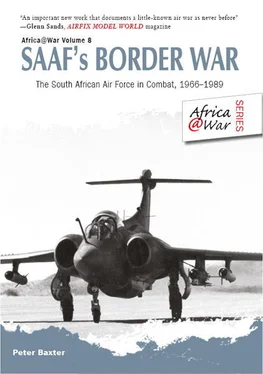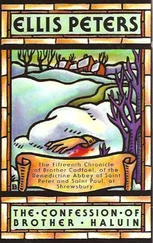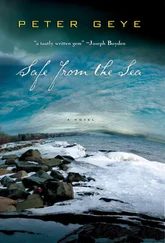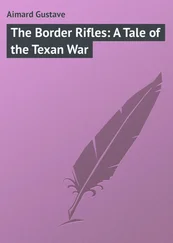Peter Baxter - SAAF's Border War
Здесь есть возможность читать онлайн «Peter Baxter - SAAF's Border War» весь текст электронной книги совершенно бесплатно (целиком полную версию без сокращений). В некоторых случаях можно слушать аудио, скачать через торрент в формате fb2 и присутствует краткое содержание. Город: Solihull, Год выпуска: 2013, ISBN: 2013, Издательство: Helion & Company, Жанр: military_history, на английском языке. Описание произведения, (предисловие) а так же отзывы посетителей доступны на портале библиотеки ЛибКат.
- Название:SAAF's Border War
- Автор:
- Издательство:Helion & Company
- Жанр:
- Год:2013
- Город:Solihull
- ISBN:978-1-908916-23-5
- Рейтинг книги:3 / 5. Голосов: 1
-
Избранное:Добавить в избранное
- Отзывы:
-
Ваша оценка:
- 60
- 1
- 2
- 3
- 4
- 5
SAAF's Border War: краткое содержание, описание и аннотация
Предлагаем к чтению аннотацию, описание, краткое содержание или предисловие (зависит от того, что написал сам автор книги «SAAF's Border War»). Если вы не нашли необходимую информацию о книге — напишите в комментариях, мы постараемся отыскать её.
SAAF's Border War — читать онлайн бесплатно полную книгу (весь текст) целиком
Ниже представлен текст книги, разбитый по страницам. Система сохранения места последней прочитанной страницы, позволяет с удобством читать онлайн бесплатно книгу «SAAF's Border War», без необходимости каждый раз заново искать на чём Вы остановились. Поставьте закладку, и сможете в любой момент перейти на страницу, на которой закончили чтение.
Интервал:
Закладка:
Brigadier-General Dick Lord, to whom the author owes thanks for his detailed account of this incident, makes an additional note that the aircraft Rankin was flying on this occasion was F1CZ 203, at that time the only aircraft in the SAAF arsenal painted in the air superiority blue–grey colour scheme that was still at that point under evaluation but that would in due course appear on the other F1CZs of the SAAF.

At the same time as these exciting events were taking place, a more routine but nonetheless successful system of operations codenamed Operation Maanskyn , or Moonshine , was being put to good use over the Shallow Area. Maanskyn were specific nightflying operations that were scheduled to utilize the moonlight during the five nights prior to a full moon and for five nights subsequent. Visual armed reconnaissance flights using Impalas had quickly put a stop to the daytime movement of SWAPO logistics along the main roads in southern Angola, teaching the enemy to avoid travel during the day in recognition of the fact that the SAAF was known not to operate at night.
The reason for this was the deaths of two experienced Impala pilots in 1976 during a night-weaponry trial at the Reimvasmaak weapons range which resulted in the banning of the tactic ever since. Early in 1980, however, a series of specifically authorized night-flight sorties over the area immediately north of the cutline had been conspicuously successful, reigniting interest in the idea and prompting a renewed series of experiments. A handful of simple innovations were developed in cooperation with specialists from the SAAF and Atlas Aviation that helped iron out some of the obvious problems associated with the highly sensory business of night flying.
The aircraft modified for this purpose were Impalas, dubbed the Maanskyn aircraft. The attitude indicator located in the centre of the instrument panel was the main source of reference required by a pilot to recover from an unusual position or extreme attitude. It was necessary that this vital instrument be isolated from the rest of cockpit illumination in order that other lights could be dimmed to protect the night vision of the pilot. This would allow the pilot to be alert to light activity on the ground with a clearly visible attitude indicator providing his primary reference for recovery after a dive attack.
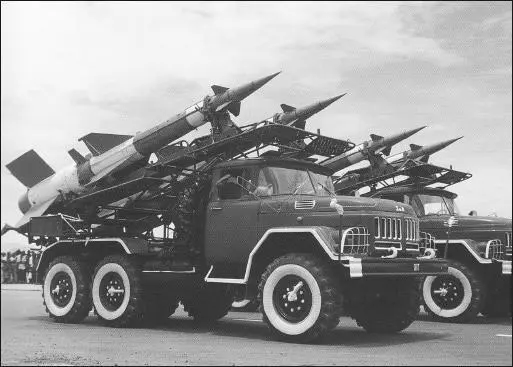
Another innovation was an audio bomb-release device that allowed the pilot to dial in a bomb-release altitude for the weapons on board. As the pilot entered his dive attack, a low audio warning would commence at 1,800 feet before the release altitude, gathering in intensity at 500 feet above, until it cut off altogether at the precise required altitude. This allowed the pilot to apply all his attention on the approaching target without having to constantly cross-reference the altimeter.
The attack profile arrived at was the standard 30-degree dive angle used when firing 68mm rockets, in order to utilize a proven gunsight setting. A secondary advantage of this shallow dive profile was that the height lost in recovery after release was not excessive. In addition to all this, all white lights in the crew room were replaced by red lights which helped in the quick achievement of good night vision which under normal circumstances can take up to an hour.
After a period of successful trials, the Maanskyn teams were deployed to AFB Ondangwa and let loose over the cut-line under the famous call sign Skunk. The patrol profile was relatively straightforward. Pilots would cruise at a low 200 KIAS (knots indicated air speed) with all armament switches selected to ‘live’ as they crossed into Angola. When the lights of a vehicle came into view the pilot then adjusted his offset position for the roll-in point, pulling his throttle to idle and silencing the undercarriage warning horn before rolling into the dive. Then it was simply a matter of tracking the target and waiting for the audio cues from the bombrelease altimeter before firing. A 37-degree angle was arrived at to achieve the correct release conditions, while, approaching the vehicle or convoy from the rear, a spot some 50 to 60 metres ahead on the moving vehicle was selected, more or less at the extremity of the headlight beam. The forward velocity of the vehicle reduced the dive angle to the required 30 degrees at release.
At the point of firing, the pilot would initiate the pull-out, concentrating solely on the illuminated attitude indicator. As the aircraft’s nose rose through the horizon, dive brake in and full throttle were selected to quickly climb out of small-arms range. The pilots would circle when climbing back up to cruising altitude, vigilant at their six o’clock for any surface-to-air missile launches. The drill, should this happen, was to break into the approaching missile and disengage back down to low altitude before heading for home.

A safe separation of between four to five miles between aircraft was maintained using the air-to-air mode of the Tacan (tactical airborne navigation) beacon. For additional safety a vertical separation of 2,000 feet was also maintained. All Maanskyn sorties were controlled by the mobile radar unit (MRU) and AFB Ondangwa.
Maanskyn operations quickly became a feature of the monthly peak-moon cycle, with the success of the strategy being clearly illustrated by the fact that vehicle traffic on the ground under full beam ceased, with just parking lights being used which, in the event, did nothing to ease the carnage since these were just as easily spotted in the blackness of the Angolan night. Flight times were varied to maintain as much of the surprise element as possible, focusing on three main lines of road communication existing in the Cunene Province: the Cahama–Xangongo blacktop road, the Mulondo–Quiteve sand road and the Cuvelai–Ongiva sand road.
Inevitably though, those needing to transit these routes at night recognized the correlation between the moon phases and SAAF air activity and simply avoided moonlit nights, moving during the dark phases at either end of the cycle. Thus Maanskyn operations began to include a donkermaan , or ‘dark moon’ variant, that simply required a little more training and a great deal more nerve. A greater reliance tended to be placed on aircraft separation using the Tacan air-to-air mode for the obvious fact that close formation in moonless conditions, with navigation lights extinguished, was both difficult and dangerous.
By the beginning of 1983, although night interdiction operations were being consistently flown, targets had become rare and kills even rarer. SWAPO and FAPLA had by then ceased nighttime travel altogether. In an attempt to diversify, it was decided from January onward that once a formation had reached the limit of its planned patrol, they would deliver their weapons on a selected target before returning to base. Obviously the selection of targets was carefully considered and made after extensive analysis of aerial photographic intelligence. According to Brigadier-General Dick Lord:
Within a few nights of this type of operation we started to reap unexpected benefits. On the first night, as the pinpoint target for the leader’s rockets we had selected a newly built AAA site just outside Mulondo. The target area we chose for the shepherd [second aircraft] was an area of thick bush just west of Quiteve, the type loved by SWAPO. [19] Lord, Brig-Gen Dick. From Fledgling to Eagle: The South African Air Force during the Border War , 30 Degrees South, Johannesburg, 2008, p. 232.
Интервал:
Закладка:
Похожие книги на «SAAF's Border War»
Представляем Вашему вниманию похожие книги на «SAAF's Border War» списком для выбора. Мы отобрали схожую по названию и смыслу литературу в надежде предоставить читателям больше вариантов отыскать новые, интересные, ещё непрочитанные произведения.
Обсуждение, отзывы о книге «SAAF's Border War» и просто собственные мнения читателей. Оставьте ваши комментарии, напишите, что Вы думаете о произведении, его смысле или главных героях. Укажите что конкретно понравилось, а что нет, и почему Вы так считаете.
